Seokjong Byun’s paper entitled “Method for monitoring chloride levels in steam condensate in thermal power plants using reverse osmosis membranes and an ion selective electrode” is accepted for publication in Separation Science and Technology. Current methods for monitoring chloride in steam condensate in thermal power plants cannot measure the recommended target level (2 ppb) or are too complex and maintenance intensive for smaller plants. We propose a new relatively low-cost, easy-to-use, low-maintenance method, in which chloride in steam condensate is separated and concentrated with reverse osmosis membranes and the chloride in the concentrate stream is measured using an ion-selective electrode. This concentration-and-measurement system was demonstrated to accurately and quickly detect changes in chloride levels in steam condensate at operationally relevant levels (2–10 ppb) and as low as 0.6 ppb. This paper can be accessed at https://doi.org/10.1080/01496395.2017.1344248.
Coronell Research Group
Water and Energy
Dr. Coronell is awarded the 2017 Duke Energy Faculty Fellowship

Dr. Coronell is awarded the Duke Energy Faculty Fellowship. This fellowship supports one faculty member per year interested in assembling teams to pursue interdisciplinary funding opportunities on energy topics. The fellowship is administered by The Institute for the Environment (IE) at the University of North Carolina, and the funds are provided by the Duke Energy Foundation.
Alex Gorzalski receives AWWA LARS Scholarship and NDSG Fellowship

Alex Gorzalski is the 2017 doctoral recipient of the American Water Works Association (AWWA) Larson Aquatic Research Support (LARS) Scholarship, and a recipient of a National Defense Science & Engineering Graduate (NDSEG) Fellowship. NDSEG Fellowships are offered to individuals who have demonstrated the ability and special aptitude for advanced training in science and engineering. The doctoral LARS Scholarship is awarded nationally to one doctoral student interested in a career in the fields of corrosion control, treatment and distribution of domestic and industrial water supplies, aquatic chemistry, and/or environmental chemistry. Congratulations, Alex!
(Paper) Partitioning of alkali metal salts and boric acid from aqueous phase into the polyamide active layers of reverse osmosis membranes

Jingbo Wang’s paper entitled “Partitioning of alkali metal salts and boric acid from aqueous phase into the polyamide active layers of reverse osmosis membranes” is accepted for publication in Environmental Science & Technology. We developed a benchtop method to determine solute partition coefficients into the polyamide active layers of RO membranes. The method uses a quartz crystal microbalance (QCM) to measure the change in the mass of the active layer caused by the uptake of the partitioned solutes. The method was evaluated using several inorganic salts (alkali metal salts of chloride) and a weak acid of common concern in water desalination (boric acid). All partition coefficients were found to be lower than 1, in general agreement with expectations from Donnan theory. This paper can be accessed at http://dx.doi.org/10.1021/acs.est.6b04323)
(Paper) Osmotic ballasts enhance faradaic efficiency in closed-loop, membrane-based energy systems

Ryan Kingsbury’s paper entitled “Osmotic ballasts enhance faradaic efficiency in closed-loop, membrane-based energy systems” is accepted for publication in Environmental Science & Technology. We tested whether the energy efficiency in a closed-loop concentration battery based on reverse electrodialysis (RED) could be increased through addition of neutral, non-permeating solutes (i.e., “osmotic ballasts”) to the dilute compartment. Experimental results comparing two proof-of-concept ballast molecules showed that ballasts mitigate osmosis, causing faradaic and round-trip energy efficiency to more than double, from 18% to 50%, and 7% to 15%, respectively, in this non-optimized system. Our results suggest that balancing osmotic pressure using non-charged solutes is a promising approach for significantly reducing faradaic energy losses in closed-loop RED systems. This paper can be accessed at http://dx.doi.org/10.1021/acs.est.6b03720)
Kasia Grzebyk receives AMTA-USBR Fellowship for Membrane Technology
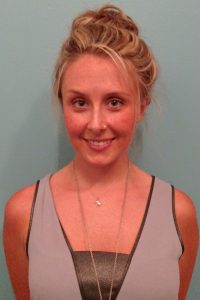
Kasia Grzebyk is one of four national recipients of an American Membrane Technology Association-US Bureau of Reclamation Fellowship for Membrane Technology. The research funded is for work that innovates water treatment in membrane related research and results in the advancement of membrane technologies in the water, wastewater, or water reuse industries. Congratulations, Kasia!
(Paper) Elemental composition of membrane foulant layers using EDS, XPS, and RBS

Alex Gorzalski’s paper entitled “Elemental composition of membrane foulant layers using EDS, XPS, and RBS” is published in the Journal of Membrane Science. We used EDS, XPS, and RBS to characterize the foulant layers of nanofiltration membranes. We studied two different types of membranes fouled by two different water sources in two different stages of a groundwater nanofiltration plant. Results showed that use of a single characterization technique may lead to incorrect conclusions about the membrane or foulant layer composition, and that the characterization technique should be chosen on the basis of the research question. In general, EDS was able to detect only major foulants, while XPS and RBS were able to detect both major and trace foulants. Additionally, (SEM-)EDS was well suited for characterizing areal heterogeneity and surface features of interest, and RBS was uniquely suited to depth profile elemental composition of depth heterogeneous samples. This paper can be accessed at http://dx.doi.org/10.1016/j.memsci.2016.08.055 (Journal of Membrane Science. 2017, 522, 31-44).
(Paper) Relationship between performance deterioration of a RO membrane and changes in its physicochemical properties

A paper in collaboration with the laboratory of Dr. Suzuki entitled “Relationship between performance deterioration of a polyamide reverse osmosis membrane used in a seawater desalination plant and changes in its phyisochemical properties” is published in Water Research. In this paper we studied the relationship between membrane performance changes in a seawater desalination plant and changes in the physical and chemical properties of membranes. The desalination plant used free chlorine as an upstream disinfectant. The results showed that membrane use at the treatment plant led to decreased water flux, decreased salt rejection, and increased organic fouling propensity. Results also showed that these performance changes were the result of degradation of the membrane surface coating and uptake of bromine by the polyamide active layer. This paper can be accessed at http://dx.doi.org/10.1016/j.watres.2016.04.068 (Water Research. 2016, 100, 326-336).
Jingbo Wang receives ACS Certificate of Merit
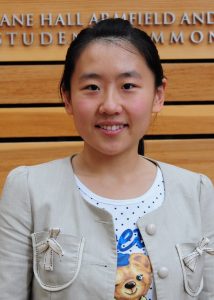
Jingbo Wang receives a Certificate of Merit for her presentation during the 2016 Spring National Meeting of the American Chemical Society (ACS), Division of Environmental Chemistry. Her presentation was entitled “Partitioning of inorganic contaminants into the polyamide active layers of thin-film composite membranes for water purification”. Congratulations, Jingbo!
Lamar (Tony) Perry receives a UNC Dissertation Completion Fellowship

Lamar (Tony) Perry receives a Dissertation Completion Fellowship from the Graduate School to support the completion of his doctoral work on thin-film nanocomposite membranes. This fellowship is given to select doctoral candidates to allow them to focus on research and writing full-time in their final year. Congratulations, Tony!
(Paper) Minimization of Low-Pressure Membrane Fouling Using a Magnetic Ion Exchange (MIEX®) Resin
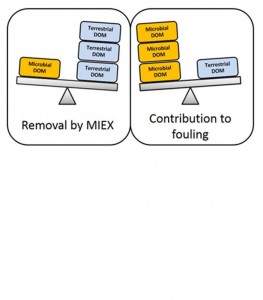
Panitan (Wan) Jutaporn’s paper entitled “Minimization of Low-Pressure Membrane Fouling Using a Magnetic Ion Exchange (MIEX®) Resin” is published in Water Research. This study showed that the efficacy of MIEX at reducing the fouling potential was inversely correlated with the content of microbial dissolved organic matter (DOM) in the source waters. Consistent with this observation, while microbial DOM was a more important component of the foulant layers than terrestrial DOM relative to their concentrations in solution, MIEX preferentially removed terrestrial DOM over microbial DOM. This paper can be accessed at http://dx.doi.org/10.1016/j.watres.2016.04.007 (Water Research. 2016, 98, 225-234).
Mikayla Armstrong receives the AWWA ARCADIS Scholarship
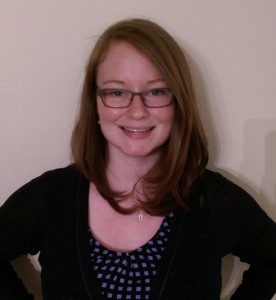
Mikayla Armstrong receives the American Water Works Association (AWWA) ARCADIS Scholarship in support of her work in membranes for water purification. Congratulations, Mikayla!
Ryan Kingsbury receives NSF Graduate Research Fellowship
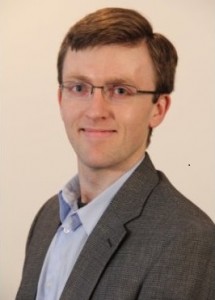
Ryan Kingsbury receives a National Science Foundation (NSF) Graduate Research Fellowship in support of his work in energy storage and generation from salinity gradients. Congratulations, Ryan!
(Paper) Facile and accurate methods to measure the thickness of the active layers of thin-film composite membranes
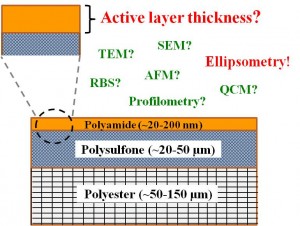
Lin Lin’s paper entitled “Identifying facile and accurate methods to measure the thickness of the active layers of thin-film composite membranes – A comparison of seven characterization techniques” is published in the Journal of Membrane Science. This is the first study that comprehensively compares various methods commonly used to measure active layer thickness (i.e., transmission electron microscopy, scanning electron microscopy, atomic force microscopy, Rutherford backscattering spectroscopy) as well as three non-commonly used methods (i.e., ellipsometry, profilometry, and quartz crystal microbalance). The results indicate that electron microscopy methods provide thickness values that are significantly larger than results provided by the non-electron microscopy techniques, and therefore should be used only when rough estimates of thickness are acceptable. The results obtained with the non-electron microscopy techniques were generally in agreement with each other. On the basis of nine different factors used to evaluate the advantages and disadvantages of the seven different methods tested, ellipsometry was found to be the most advantageous methods. This paper can be accessed at http://dx.doi.org/10.1016/j.memsci.2015.09.059 (Journal of Membrane Science. 2016, 497, 365-376).
Kasia Grzebyk is selected as an ELISS Fellow for the Class of 2016

Kasia Grzebyk is selected as an Emerging Leaders in Science & Society (ELISS) Fellow for their Class of 2016. ELISS is a leadership development program, hosted at American Association for the Advancement of Science (AAAS), that prepares graduate students to collaborate across boundaries to help solve complex issues for the benefit of society. Congratulations, Kasia!

University Operator: (919) 962-2211 | © 2024 The University of North Carolina at Chapel Hill |